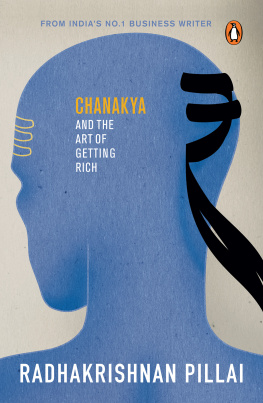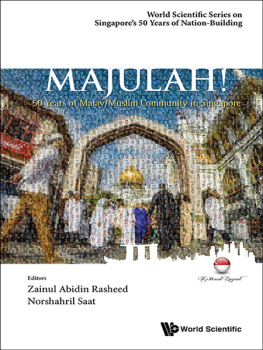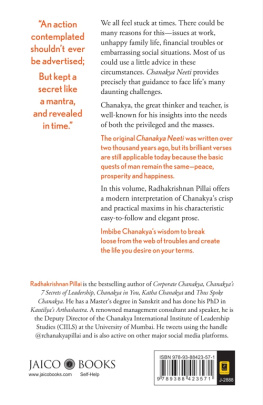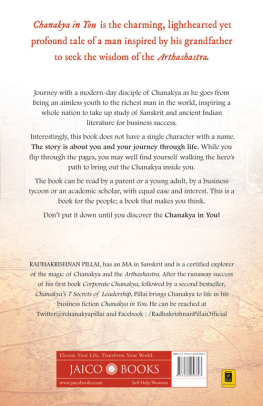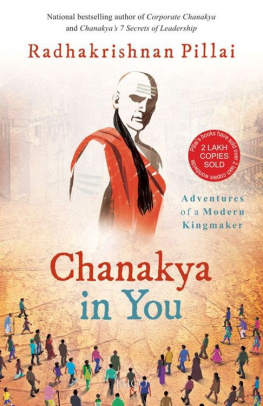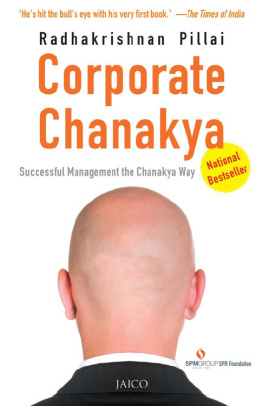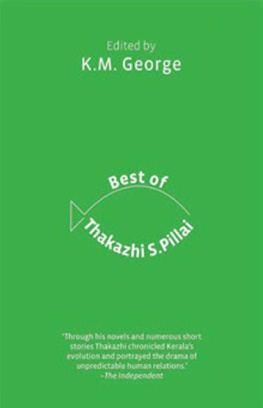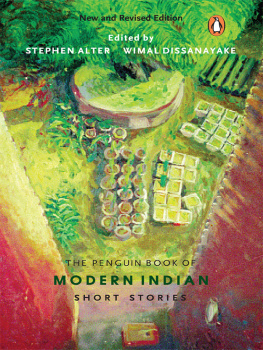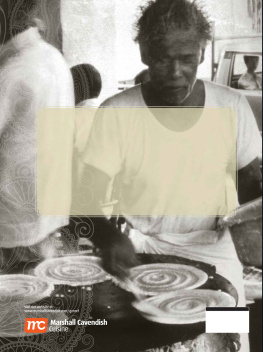

World Scientific Series on Singapores 50 Years of Nation-Building
Published
50 Years of Social Issues in Singapore
edited by David Chan
Our Lives to Live: Putting a Womans Face to Change in Singapore
edited by Kanwaljit Soin and Margaret Thomas
50 Years of SingaporeEurope Relations: Celebrating Singapores Connections with Europe
edited by Yeo Lay Hwee and Barnard Turner
Perspectives on the Security of Singapore: The First 50 Years
edited by Barry Desker and Cheng Guan Ang
50 Years of Singapore and the United Nations
edited by Tommy Koh, Li Lin Chang and Joanna Koh
50 Years of Environment: Singapores Journey Towards Environmental Sustainability
edited by Tan Yong Soon
Food, Foodways and Foodscapes: Culture, Community and Consumption in Post-Colonial Singapore
edited by Lily Kong and Vineeta Sinha
50 Years of the Chinese Community in Singapore
edited by Pang Cheng Lian
Singapores Health Care System: What 50 Years Have Achieved
edited by Chien Earn Lee and K. Satku
SingaporeChina Relations: 50 Years
edited by Zheng Yongnian and Lye Liang Fook
Singapores Economic Development: Retrospection and Reflections
edited by Linda Y. C. Lim
Singapore and UNICEF: Working for Children
edited by Peggy Kek and Penny Whitworth
Singapores Real Estate: 50 Years of Transformation
edited by Ngee Huat Seek, Tien Foo Sing and Shi Ming Yu
The Singapore Research Story
edited by Hang Chang Chieh, Low Teck Seng and Raj Thampuran
The complete list of titles in the series can be found at
http://www.worldscientific.com/series/wss50ynb

Published by
World Scientific Publishing Co. Pte. Ltd.
5 Toh Tuck Link, Singapore 596224
USA office: 27 Warren Street, Suite 401-402, Hackensack, NJ 07601
UK office: 57 Shelton Street, Covent Garden, London WC2H 9HE
Library of Congress Cataloging-in-Publication Data
Names: Pillai, Gopinath, editor.
Title: 50 years of Indian community in Singapore / editor, Gopinath Pillai,
Ambassador-at-Large, Singapore & Institute of South Asian Studies, Singapore.
Other titles: Fifty years of Indian community in Singapore
Description: Hackensack, NJ : World Scientific, 2016. | Series: World
scientific series on Singapores 50 years of nation-building
Identifiers: LCCN 2016004866| ISBN 9789813140578 (hardcover : alk. paper) |
ISBN 9813140577 (hardcover : alk. paper) | ISBN 9789813140585 (pbk. : alk. paper) |
ISBN 9813140585 (pbk. : alk. paper)
Subjects: LCSH: East Indians--Singapore--History. | Singapore--Civilization--Tamil influences. |
Singapore--Ethnic relations. | Singapore--History--19651990. | Singapore--History--1990
Classification: LCC DS610.25.E37 A14 2016 | DDC 305.8914/1105957--dc23
LC record available at http://lccn.loc.gov/2016004866
British Library Cataloguing-in-Publication Data
A catalogue record for this book is available from the British Library.
Copyright 2016 by World Scientific Publishing Co. Pte. Ltd.
All rights reserved. This book, or parts thereof, may not be reproduced in any form or by any means, electronic or mechanical, including photocopying, recording or any information storage and retrieval system now known or to be invented, without written permission from the publisher.
For photocopying of material in this volume, please pay a copying fee through the Copyright Clearance Center, Inc., 222 Rosewood Drive, Danvers, MA 01923, USA. In this case permission to photocopy is not required from the publisher.
Printed in Singapore
Foreword
by S.R. Nathan
In the book Indians in Singapore by Dr. Rajesh Rai, the story ends with the return of the British after World War II. We can be proud of this new publication containing a compilation of essays. I applaud these efforts behind each of them. In a single volume it provides what has happened since. It differentiates what happened in the recent past, and that which has been written, for researchers on the subject to draw from. Hopefully, it also serves as a book on Indians of Singapore in recent times. In all this, the contributors have struggles with the inadequacies of archives. They have tried to meet this inadequacy with their diligence.
This book Fifty Years of Nation Building with an overview of the role played by the Indian community, supplements some of the inadequacies of past publications. In a single text, the essays in it form a rich but varied tapestry of the Indian communitys contributions to our nation building efforts over the past. It has turned out as a book of separate parts but of shared visions our historical creation.
The essays, though many, are yet rich in their scope and varied in nature. There were doers and observers. I am sure Ambassador Gopinath Pillai found the experience of compiling this series a voyage of discovery and recognise that there are many more noteworthy stories yet to be published.
In this task, the contributors must have faced their own difficulties. They had to rely largely on secondary sources and researching would have been for them a worrying task.
Life in Singapore must have been very different, unlike in India where there was a scheduled space by caste. It may have given them the appetite and inspiration not to be limited by any scheduled space, in caste-free Singapore.
My regret is that this volume speaks nothing of the Ceylonese, who contributed immensely to life in Singapore. Geographically they may be separate, but in Singapore and Malaya they were categorised among Indians and contributed tremendously to all in Singapore.
S.R. Nathan
Sixth President of the Republic of Singapore
Gopinath Pillai
In 1992, the Indian Community hosted a farewell dinner for Singapores founding Prime Minister on his retirement as PM. The Organising Committee decided to present him with a book that captured his relationship with the Indian community during his days as head of government. The title of the book was A Place in the Sun . The message we were trying to convey was that in spite of the fact Indians were less than 10% of the population, he ensured we had a meaningful role in independent Singapore. He did not do this by having a token presence of Indians in visible positions. He ensured that those he inducted into the cabinet as well as senior positions in the civil service were men of substance with strong value systems. Singaporeans accepted them not because they belonged to a minority group, but because they were competent ministers and officials who carried out their jobs fairly and efficiently.
To understand the Indian community in Singapore, one needs to understand certain basic facts about them.
Indians are not a homogeneous community. They are diversified in terms of language, culture, religion, ethnicity and social strata, a euphemism for cast. In spite of this diversity, there is a common thread that runs through the community that links them all and makes them Indian.


